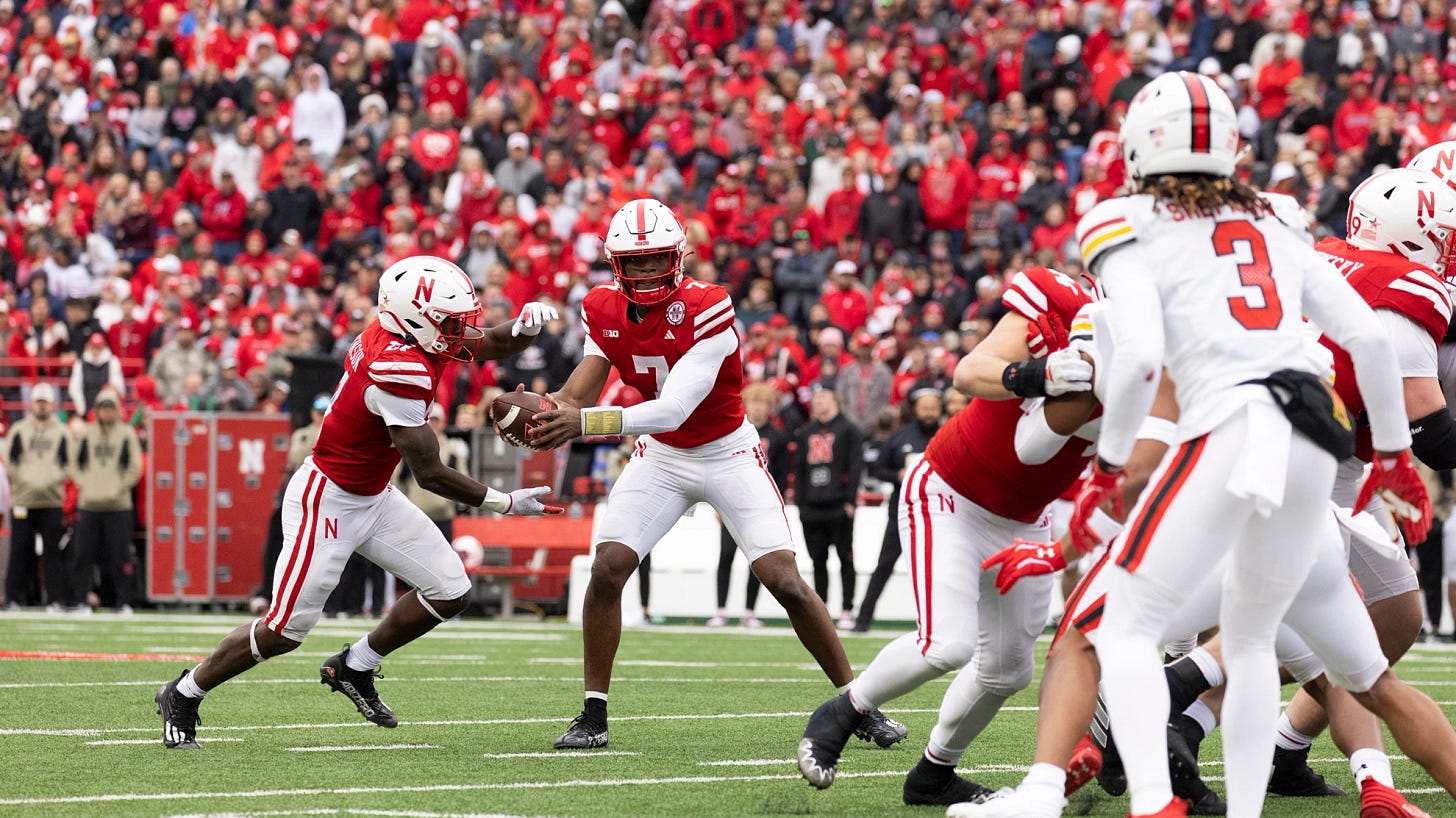Glossary of Terms1
Link to Charting Sheet2
From an actual real-life perspective, a game where you can’t play your top two quarterbacks — one for injury, the other for turnovers — is bad. A complete disaster. One of the worst possible scenarios if you are the person in charge of trying to win a team a football game.
But from the privileged, low-stakes perspective of a stats and scheme newsletter, the entry of Jeff Sims (and later Chubba Purdy) into Nebraska’s lineup provided a pretty fascinating under-the-hood look into Nebraska’s offense and some decisions that have been made with the offense this year. How much of what the offensive staff was running over the last seven games with Heinrich Haarberg was what it wanted to run, and would those distributions change with a different (and less limited) quarterback in the game? Was Sims’ poor early play a casualty of a small, two-game sample size? Has the rash of injuries to the supporting cast put Haarberg at a disadvantage? Does the staff view there being a significant difference in what plays they can call for each quarterback? It’s cool to not have my job on the line so that we can examine this stuff.
Haarberg’s only drive of the game before his ankle sprain looked much like what we’ve seen the gameplan coalesce into since he took over against Northern Illinois: inside runs out of spread formations, the under-center gap-scheme and puller-heavy handoffs, an outside option pitch play, a low-risk drag screen, quick game out of empty alignments, and an all-vertical deep shot, That’s about all they trust him to run.
But with Sims in the game, we saw the offense expand slightly, with more optionality in the running attack, more RPOs, and more nuanced passing concepts that provide more functionality and check downs to keep things on track:
Of the 26 plays with a run element called on the Sims drives, 15 had a quarterback read included, either on run reads, run tags, or on run-pass options. That’s a rate of 57.7%. During the seven Haarberg starts, that same rate was about 37.6%. The staff gave Sims more ability to read the defense in the run game.
With Sims in the game, the staff called seven true RPOs3 in his 40 snaps. That’s a rate of about 17%. The staff has called just 17 true RPOs total for Haarberg in his seven starts, out of 338 plays, a rate of about 5%. With Sims in the game, Nebraska trusted him more to operate with more complex reads.
The dropback pass rate was actually a couple percentage points lower for Sims than it has been for Haarberg, but the types of passing concepts Nebraska went to were different. Three-step concepts were called for Sims at a 53.8% rate, with Sims’ rate of quick game and deeper five- or seven-step drops both in the 20% range. The distribution for Haarberg is more siloed, with about 60% three-step and 30% quick game, meaning the staff called more deep, five-step drop plays for Sims than it did Haarberg. This was a little surprising, because anecdotally it seemed as if the staff had turned to more of the “shot” type passes with Haarberg in the lineup.
Keep reading with a 7-day free trial
Subscribe to Black 41 Flash Reverse to keep reading this post and get 7 days of free access to the full post archives.



